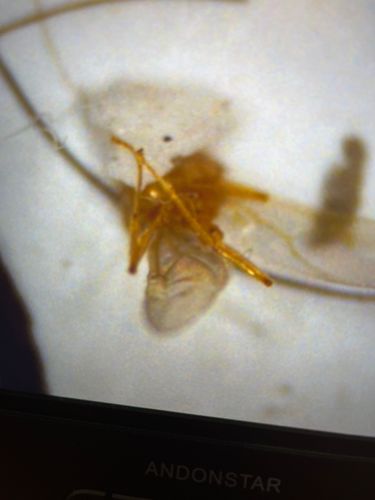Booklouse
Scientific Name: Psocoptera (various genera and species, e.g., Liposcelis spp.)
Order & Family: Order: Psocoptera, Family: Liposcelididae (or other psocid families)
Size: Generally very small, ranging from 1 mm to 2 mm in length.

Natural Habitat
Booklice typically inhabit damp, warm, and dark places. They are commonly found in homes, libraries, museums, and storage areas, feeding on microscopic molds, fungi, starches, and other organic matter. They thrive in high humidity conditions, often found in books, food pantries, under wallpaper, or in furniture.
Diet & Feeding
Booklice are scavengers. Their primary diet consists of microscopic molds, fungi, pollen, dried insects, flaked skin, and starchy materials found in household dust, wallpaper paste, book bindings, cereals, grains, and other stored food products.
Behavior Patterns
They are mostly nocturnal and prefer undisturbed, humid environments. Booklice are wingless or have very reduced wings, not capable of flight over long distances. They are often found in large numbers when conditions are favorable (high humidity). Their development is hemimetabolous, meaning they undergo incomplete metamorphosis (egg, nymphal instars, adult).
Risks & Benefits
Potential Risks: Booklice are generally harmless to humans, not biting or transmitting diseases. However, they can be a nuisance pest, especially when present in large numbers. They can damage books, papers, and stored food products by feeding on mold or the starchy components. In rare cases, their presence might trigger allergic reactions in sensitive individuals. Potential Benefits: In outdoor environments, some species contribute to decomposition by feeding on fungi and decaying plant matter.
Identified on: 9/5/2025